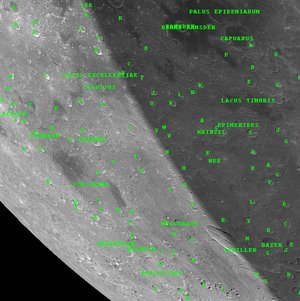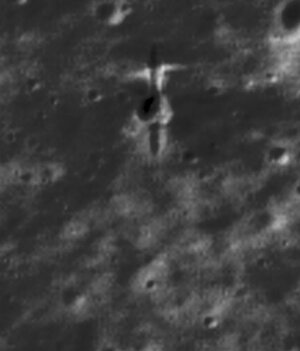Accept all cookies Accept only essential cookies See our Cookie Notice

About ESA
The European Space Agency (ESA) is Europe’s gateway to space. Its mission is to shape the development of Europe’s space capability and ensure that investment in space continues to deliver benefits to the citizens of Europe and the world.
Highlights
ESA - United space in Europe
This is ESA ESA facts Member States & Cooperating States Funding Director General Top management For Member State Delegations European vision European Space Policy ESA & EU Space Councils Responsibility & Sustainability Annual Report Calendar of meetings Corporate newsEstablishments & sites
ESA Headquarters ESA ESTEC ESA ESOC ESA ESRIN ESA EAC ESA ESAC Europe's Spaceport ESA ESEC ESA ECSAT Brussels Office Washington OfficeWorking with ESA
Business with ESA ESA Commercialisation Gateway Law at ESA Careers Cyber resilience at ESA IT at ESA Newsroom Partnerships Merchandising Licence Education Open Space Innovation Platform Integrity and Reporting Administrative Tribunal Health and SafetyMore about ESA
History ESA Historical Archives Exhibitions Publications Art & Culture ESA Merchandise Kids Diversity ESA Brand Centre ESA ChampionsLatest
Space in Member States
Find out more about space activities in our 23 Member States, and understand how ESA works together with their national agencies, institutions and organisations.
Science & Exploration
Exploring our Solar System and unlocking the secrets of the Universe
Go to topicAstronauts
Missions
Juice Euclid Webb Solar Orbiter BepiColombo Gaia ExoMars Cheops Exoplanet missions More missionsActivities
International Space Station Orion service module Gateway Concordia Caves & Pangaea BenefitsLatest
Space Safety
Protecting life and infrastructure on Earth and in orbit
Go to topicAsteroids
Asteroids and Planetary Defence Asteroid danger explained Flyeye telescope: asteroid detection Hera mission: asteroid deflection Near-Earth Object Coordination CentreSpace junk
About space debris Space debris by the numbers Space Environment Report In space refuelling, refurbishing and removingSafety from space
Clean Space ecodesign Zero Debris Technologies Space for Earth Supporting Sustainable DevelopmentApplications
Using space to benefit citizens and meet future challenges on Earth
Go to topicObserving the Earth
Observing the Earth Future EO Copernicus Meteorology Space for our climate Satellite missionsCommercialisation
ESA Commercialisation Gateway Open Space Innovation Platform Business Incubation ESA Space SolutionsLatest
Enabling & Support
Making space accessible and developing the technologies for the future
Go to topicBuilding missions
Space Engineering and Technology Test centre Laboratories Concurrent Design Facility Preparing for the future Shaping the Future Discovery and Preparation Advanced Concepts TeamSpace transportation
Space Transportation Ariane Vega Space Rider Future space transportation Boost! Europe's Spaceport Launches from Europe's Spaceport from 2012Latest

SMART-1 views a cluster of the Moon’s craters
Thank you for liking
You have already liked this page, you can only like it once!
This image shows a crater-filled region in the northeastern part of the Moon. Several features are visible here, including, to the left of the frame, the small Keldysh crater peeking into view. Below and to the right of Keldysh is the small depression of Hercules F, which sits to the left of the faint and eroded rim of Atlas E. The largest and most prominent feature, visible towards the top right of the frame, is Atlas crater.
Atlas is a couple of kilometres deep and nearly 90 km in diameter, with an outline that is slightly more polygonal than circular. The crater floor is peppered with hills, rifts and fractures that surround a clearly visible central mountain (seen casting a shadow). Some of the crater’s features are thought to have been influenced or shaped by volcanism – most prominently, the branching web of deep fissures and cracks stretching throughout the crater, known as Rimae Atlas.
Just below Atlas, out of frame, lies the Hercules crater, the ‘parent’ of Hercules F. Hercules F is known as a satellite crater. Most lunar craters are satellites; one major feature is originally named, and any surrounding satellites take on the same moniker followed by a capital letter: Atlas, Atlas A, and so on. Keldysh, the leftmost crater in this frame, was originally called Hercules A before it was renamed by the International Astronomical Union in the early 1980s.
This practice, of studying, mapping and naming the features on the lunar surface is known as selenography. The Moon’s features are usually named after either mythological figures, as demonstrated by Atlas and Hercules, or in recognition of deceased scientists or explorers, as is the case with Keldysh, which is named for Soviet mathematician Mstislav Vsevolodovich Keldysh (1911–78). Keldysh was a key figure in the Soviet space programme.
This view of the Moon was captured by SMART-1’s camera on 3 February 2006, when the craft was 2474 km above the surface. ESA’s SMART-1, short for Small Missions for Advanced Research and Technology-1, was launched on 27 September 2003. For 14 months it followed a long, spiralling trajectory around Earth towards the Moon as it tested new technologies, including solar electric propulsion. It orbited the Moon from 15 November 2004 until 3 September 2006, when it was intentionally sent crashing onto the lunar surface to end its mission.
-
CREDIT
ESA/SMART-1/AMIE camera team/Space Exploration Institute -
LICENCE
CC BY-SA 3.0 IGO or ESA Standard Licence
(content can be used under either licence)

Lunar view of the SMART-1 impact area

Craters on the edge

The messy peaks of Zucchius

Inside of Gassendi crater















 Germany
Germany
 Austria
Austria
 Belgium
Belgium
 Denmark
Denmark
 Spain
Spain
 Estonia
Estonia
 Finland
Finland
 France
France
 Greece
Greece
 Hungary
Hungary
 Ireland
Ireland
 Italy
Italy
 Luxembourg
Luxembourg
 Norway
Norway
 The Netherlands
The Netherlands
 Poland
Poland
 Portugal
Portugal
 Czechia
Czechia
 Romania
Romania
 United Kingdom
United Kingdom
 Slovenia
Slovenia
 Sweden
Sweden
 Switzerland
Switzerland


























